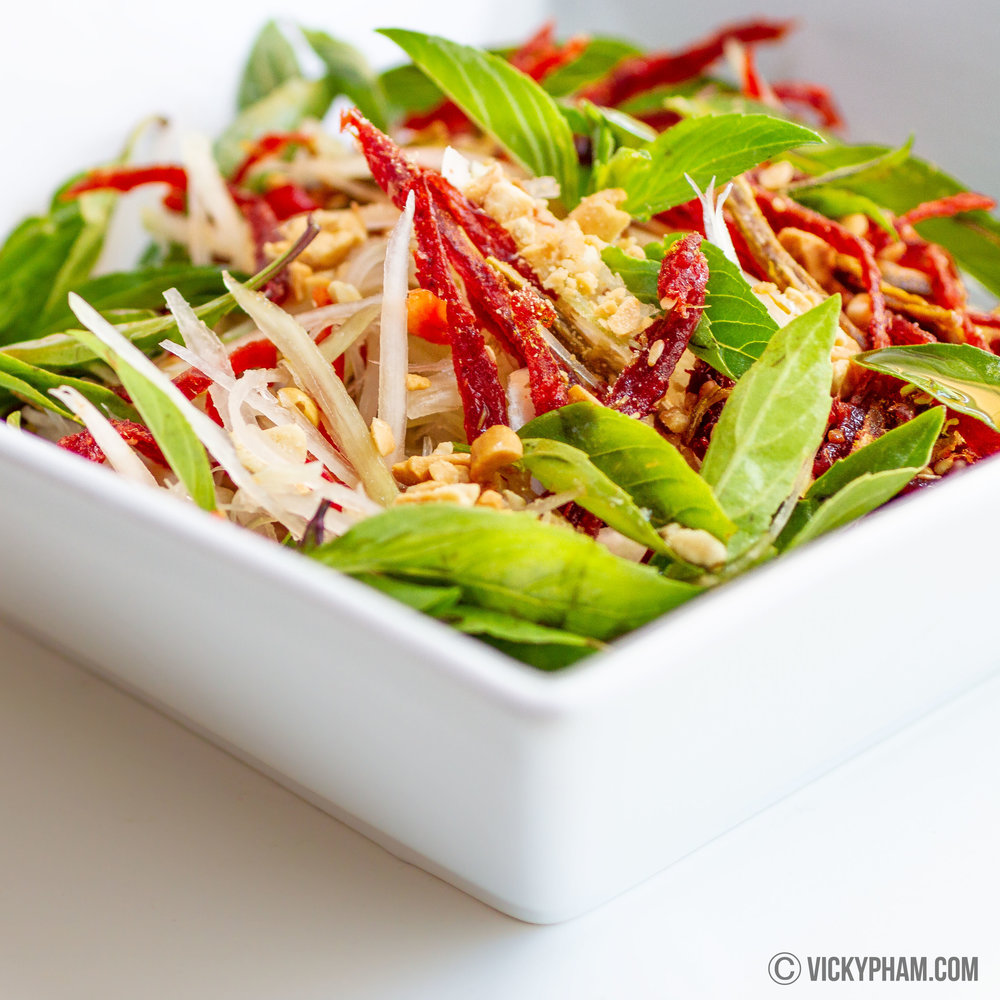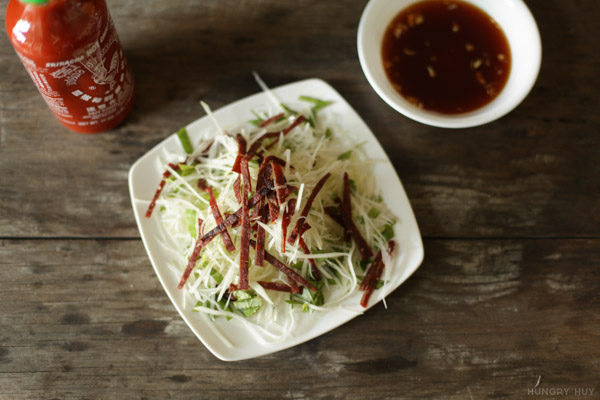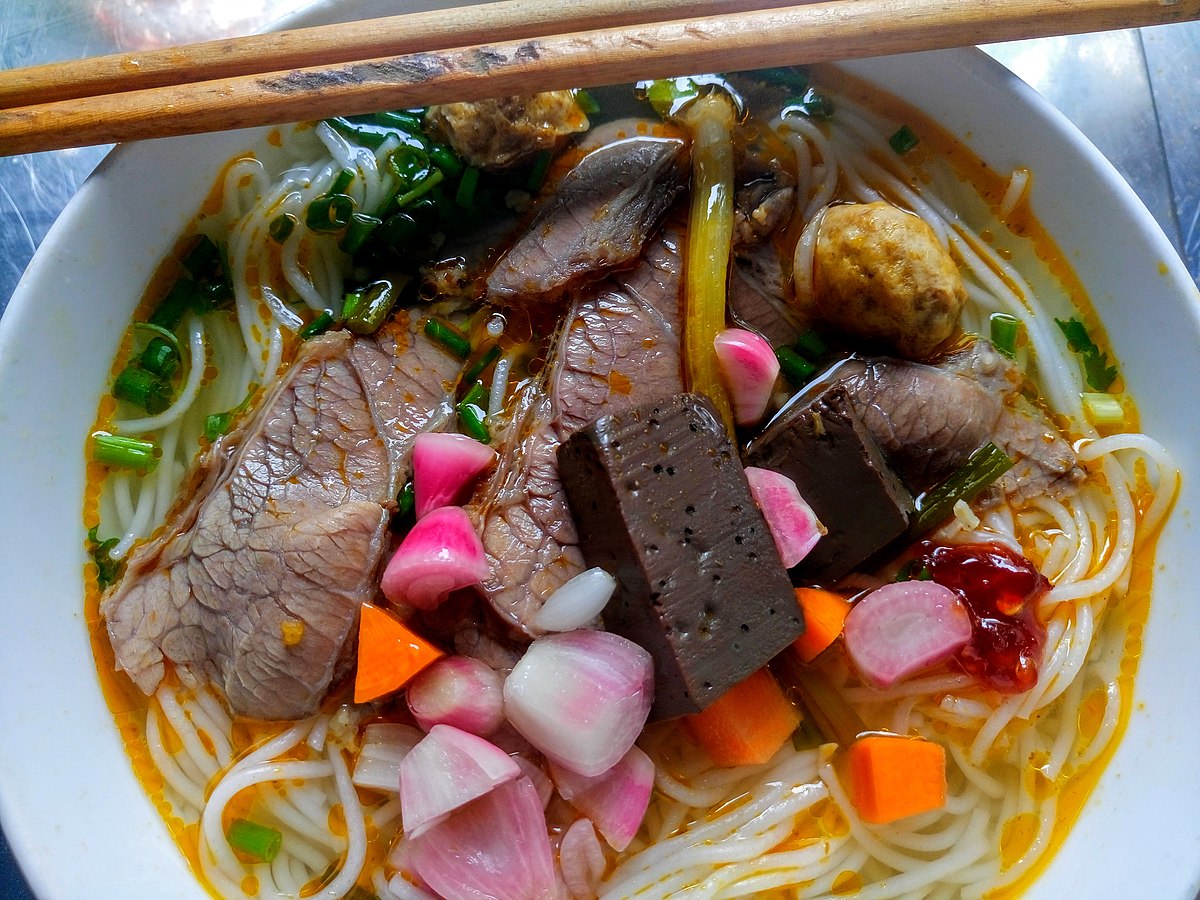Gỏi đu đủ
goi du du, green papaya salad
Green papaya salad[a] is a spicy salad made from shredded unripe papaya. Originating in Laos, it is a national dish and a cornerstone of Lao cuisine, known locally as tam som or tam mak hoong. The dish exemplifies bold, vibrant flavors, blending sour, spicy, salty, and sweet elements, and holds deep cultural significance in Laos. Green papaya salad is also widely popular in Thailand, particularly in the Isan region, which shares close ethnic and cultural ties with Laos due to its predominantly ethnic Lao population. Introduced to Thailand via Isan, the dish—called som tam[b] in Thai—became a staple of Thai cuisine and spread nationwide. Beyond Laos and Thailand, green papaya salad has also gained regional prominence across continental Southeast Asia, including Cambodia, Myanmar, and Vietnam, as well as Xishuangbanna .[citation needed] The dish is deeply rooted in Lao cuisine, where it is traditionally called tam mak hoong (Lao: ຕຳຫມາກຫຸ່ງ, pronounced [tàm mȁːk.hūŋ], lit. 'pounded papaya') or tam som (Lao: ຕໍາສົ້ມ, pronounced [tàm.sȍm], lit. 'sour pounded [salad]'), in which the word tam (Lao: ຕໍາ) refers to the pounding of ingredients in a mortar, a method of preparation central to Lao and neighboring culinary traditions.
Source: Wikipedia
Recipes

Vietnamese Green Papaya & Beef Jerky Salad (Gỏi Đu Đủ Khô Bò) — Vicky Pham

Green Papaya Salad Recipe (Vietnamese Style with Beef Jerky)






